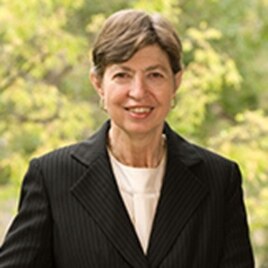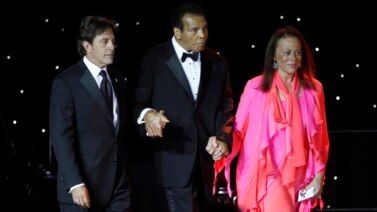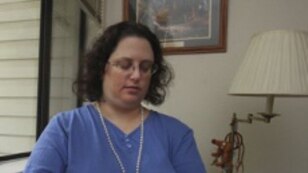
BOB DOUGHTY: This is SCIENCE IN THE NEWS, in VOA Special English. I’m Bob Doughty.
FAITH LAPIDUS: And I’m Faith Lapidus. Today, we will tell about a ten-year study of the world’s oceans. We will also tell about four American women who are being honored for their work in science.
(MUSIC)
BOB DOUGHTY: A project called the “Census of Marine Life” tells its story in big numbers. Two thousand seven hundred researchers from eighty countries and territories took part in the Census. They attempted to estimate all the creatures in the world’s oceans. More than five hundred scientific expeditions were needed to complete the study. In all, the project cost six hundred fifty million dollars.
FAITH LAPIDUS: Hundreds of the researchers gathered in London last month as the Census results were announced. The scientists said they have identified two hundred fifty thousand new species. Among them are one thousand two hundred new kinds of animals.
The scientists collected another five thousand species from the oceans during the ten years. But those creatures have yet to be identified. The researchers said as many as seven hundred fifty thousand other species have yet to be discovered.
Jesse Ausubel of the Alfred P. Sloan Foundation helped organize the study. He said the researchers have established a baseline of what lives in the ocean. This standard, or measure, of comparison can be used in the future to note and document changes.
BOB DOUGHTY: Many of the project’s discoveries were of microbes. The scientists said extremely small life forms make up ninety percent of the ocean’s total living material, also known as biomass.
In two thousand six, scientific census-takers found a hairy new species of crab near Easter Island. They call it the “Yeti crab.” The creature got its name from a hairy, ape-like creature that supposedly lives in Tibet.
Another unexpected discovery was a squid almost six and one half meters long. The researchers also found an ancient shrimp. It is a small shellfish thought to have disappeared centuries ago.
Three species of small creatures that were documented do not require oxygen to live. Researchers found them on the floor of the Mediterranean Sea. Also in the Mediterranean, a team of census-takers discovered a living fossil. The animal represents the last species of a kind of deep-water clam. The shellfish is believed to have lived around the world for more than one hundred million years.

FAITH LAPIDUS: The researchers learned that Pacific bluefin tuna crossed the Pacific Ocean three times in six hundred days. But puffins recorded the longest travel. These birds circle the earth every year, flying more than sixty four thousand kilometers.
Other discoveries showed reduced numbers of creatures valuable to the ocean environment. In some areas, for example, sharks have almost completely disappeared. Sharks provide a number of services for underwater life. And, about forty percent of plankton has disappeared in the past thirty years. Many fish depend on this small life-form for food.
BOB DOUGHTY: The Census of Marine Life began in two thousand. It started with seventy-five million dollars from the Sloan Foundation. Over the years, governments, laboratories, universities and other centers paid for the rest.
As one Project planning committee official said, the Census of Marine Life has enlarged the known world.
(MUSIC)
FAITH LAPIDUS: Three women are among ten ** winners of the National Medals of Science. Marye Anne Fox, Esther Conwell and Susan Lindquist will receive America’s highest honor for science.
Another woman, Helen Free, is among winners of the National Medal of Technology and Innovation. That award is America’s highest honor for engineering and invention.
Over the years, each woman has won other honors and awards. Each belonged to influential professional organizations. Each has helped other women rise in traditionally male careers.
A committee appointed by President Obama made the nominations. The president will present the medals next Tuesday, November sixteenth. The National Science Foundation supervises the awards for the White House.

BOB DOUGHTY: Medal winner Marye Anne Fox is chancellor of the University of California at San Diego. Professor Fox has served as the university’s administrative head since two thousand four. She is being honored in part for her research in renewable energy sources.
Marye Anne Fox was born in nineteen forty-seven. She became a chemist when few women held such positions. She has worked to create partnerships between universities and industry. She also has helped get the federal government to provide billions of dollars for scientific research.
Professor Fox has provided information about scientific subjects to the United States Congress.
(MUSIC)
FAITH LAPIDUS: Medal winner Esther Conwell is a chemistry and atomic physics expert at the University of Rochester in New York. Her work helped lead to the modern computer. The awards committee noted the help she has given other women to become scientists.
Professor Conwell received a doctor’s degree in atomic physics in the late nineteen forties. That was extremely unusual at the time for a woman. By then, she already had worked on a project she calls her proudest work. She was studying at the University of Rochester when a professor suggested a research problem for her. Victor Weisskopf’s suggestion resulted in an explanation of how electrons travel through semiconductors. Some experts say the work caused a revolution in computers.
ESTHER CONWELL: “I was a graduate student at the University of Rochester. And it was proposed by my thesis advisor Professor Weisskopf that we work on this problem to understand the effect of the impurities in scattering electrons and interfering with their motion.
“And that work was completed and turned out to be an important thing, an important feature, something that you have to understand if you want to make the best use of electrons in transistors and other devices.”
Esther Conwell was born in nineteen twenty-two. She still works every day.
(MUSIC)
BOB DOUGHTY: Medal winner Professor Susan Lindquist is with the Massachusetts Institute of Technology. She belongs to the Whitehead Institute for Biomedical Research and is an investigator with the Howard Hughes Medical Institute.
Professor Lindquist was born in nineteen forty-nine. She is being recognized for showing the importance of changes in the action of proteins. The actions, known as folding, can influence areas from human disease to nanotechnology, the technology of extremely small mechanisms.
Professor Lindquist’s laboratory studies how prions form. Prions are proteins. They can change into a form that is able to continue their own existence. The laboratory also studies the diseases they cause. She and her team also discovered a possible mechanism for speeding up evolution. Their discovery offers the possibility for creating better plant crops. It could lead to ending the need for genetic engineering of crops.
(MUSIC)
FAITH LAPIDUS: Another scientist has made life much easier for people with the disease diabetes. Helen Murray Free invented self-testing equipment that lets diabetics measure their own blood levels of glucose at home.
Helen Free developed dry reagents for urine testing. Reagents produce a chemical reaction – or lack of reaction – important in medical testing. She said she is proudest of having property rights to Clinistix Reagent Strips. When placed in a person’s liquid wastes, they can provide information about conditions like diabetes, infections and liver and kidney damage.
Helen Free was born in nineteen twenty-three in Pennsylvania. She spent her early career at Miles Laboratories in Indiana, where she still lives. Later the drug company Bayer, Incorporated bought Miles Laboratories. She became a professional relations consultant to Bayer. She also taught at Indiana University and wrote books with her husband, Alfred Free.
Helen Murray Free is known for helping to launch organizations that help increase public interest in science. For example, she helped start “Kids & Chemistry.” In the program, scientists teach schoolchildren to perform hands-on experiments.
(MUSIC)
BOB DOUGHTY: This SCIENCE IN THE NEWS was written by Jerilyn Watson. June Simms was our producer. I’m Bob Doughty.
FAITH LAPIDUS: And I’m Faith Lapidus. Join us again next week for more news about science in VOA Special English.




